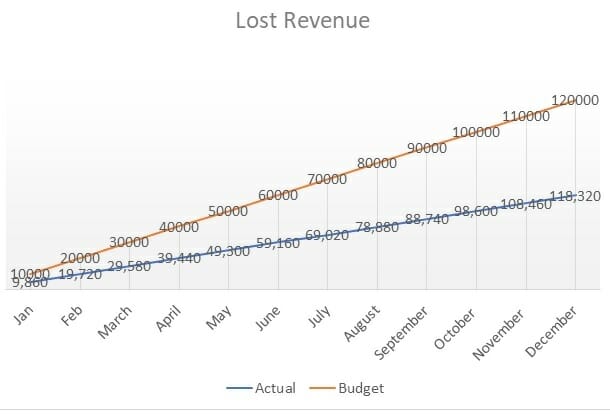If technical recruiting is not hard enough in this crazy environment, try recruiting for security cleared engineers and developers. To say the pool is shallow is a drastic understatement. Government contracting recruiters are expected to recruit some of the hardest to find people in the world with a fraction of the budget of their commercial counterparts. When unfilled vacancies equal lost billable revenue, companies are just pouring money down the drain. Cleared recruiting is all about doing more with less, and usually in less time. In effort to help your team find success in today’s challenging environment, here are five tips to take control of your recruiting that will have a major impact without costing a dime
1. Own Your Data
It all starts with the data. You can’t know where you want to go if you don’t know where you are. There are many industry wide benchmarks available for recruiting which you can easily lean on to get a starting point, but keep in mind all Applicant Tracking Systems have a common point of failure… the human entering the data. This is why it is crucial that your team is all operating with the same data entry methodology and standards. The data is the number 1 factor in improving hiring performance, notice I didn’t say “recruiting performance.”
Time to fill, time to hire, time in workflow are all great hiring metrics, but There is one chart that I have seen on the boardroom walls that keeps executives up at night. The below lost revenue chart, as simple as it is, shows a disturbing reality when it comes to vacancies. The longer a vacancy stays open, the more money you lose which can never be recovered (in most cases).
What does a crude lost revenue chart have to do with recruiting data you ask? Well, everything your team is doing should be in the effort to get that “actual” and “budget” line to be the same. The gap between the two lines equal money left on the table due to billable positions being left vacant. So, own your data. Understand where your hires are coming from, what your candidate response rate is, what is the average time a candidate sits at every stage in your process, and where are the roadblocks. The data will paint an obvious picture of your hiring process and where the biggest gaps are, allowing you to focus in on problem areas and start implementing solutions.
2. Hold a mirror up to your hiring team – Communication beats technology
I can write an entire article on this point alone, but I am going to give you the cliff notes. Does every single person that touches your hiring process understand what they are doing and why they are doing it? I am willing to bet they don’t. Many people that touch hiring only do so as an ancillary duty to their normal day to day, and probably don’t have a clear set of objectives that relate to the hiring process. It is more like, “hey show up to the conference room at 1:00 and screen this developer candidate.”
Simply put, anyone that touches a candidate needs to know exactly what job they are conducting the interview for, what is expected of them when taking part in the hiring process, and in what timeframe responses are expected. Unexpressed expectations are the quickest way to miscommunicate hiring goals and lose money. Did you explain to the interviewer the urgency in which you needed the position filled? Do they understand this is a backfill to which you are losing money every day the seat is vacant? If they don’t, and it is not communicated, they will schedule it when they can fit it in. Days can easily turn to weeks lost just by not communicating the urgency of the task. In this market, cleared candidates are not waiting around very long for you to get your act together.
Clearly define the roles of everyone in the hiring process and establish SLA’s that go a long with each step. This is where owning your data starts influencing your process. If you have identified candidates that are sitting way to long under review by HM, adopt and train on a SLA specific to this part in the process. If you are finding that jobs are staying open too long before you are even identifying candidates, dig in on your sourcing and see if additional investment needs to be spent there,
3. Remove Barriers to entry
There are barriers all over the place during the hiring process and often they are self-imposed. OFCCP is a big factor here, and audits have many companies confused about hiring regulations which has led to some pretty over-compliant procedures. I am no OFCCP expert, but I am pretty sure you don’t get bonus points for being “over-compliant”. To those of you out there that caution on the side of compliance over risk, understand I am not advocating skirting your regulations, I am simply saying… understand how to be compliant, but don’t paralyze your hiring team in fear or compliance.
Have you taken the time to go through your applicant process? Apply to one of the jobs on your website and see how long it takes. Are there multiple points of redundant data entry? Is there an easy apply button? What happens to an applicant if they apply on a job board: are they asked to complete another identical application? How many clicks from your website landing page until a candidate can actually apply for a job? Follow the applicant flow and get an idea of how easy/difficult it is to apply to your companies’ vacancies.
4. Own Your Scope – Ditch LCATS and create Job descriptions.
Labor categories used to define scope and bid work are often times not what someone is actually doing day to day. This is especially problematic if you are a subcontractor and have not received updated job descriptions from your prime. What this boils down to is communication and understanding the desired vs mandatories, as well as any changes to the requirements that may have been made since time of award. Update your requirements with the hiring team to be certain your TA team is working on the right thing.
Nothing is more detrimental to your hiring process than spending weeks working the wrong requirements, which happens very frequently in government contracting. It is not only a waste of resources, but it is very difficult for a recruiter to apply the same tenacity to the search once they have the “correct requirements”.
Create an intake meeting or kickoff process in which the recruiting team works with the technical team to vet position and requirement details. Establish what a great candidate looks like in quantifiable terms so there is no confusion. This should clearly be communicated and documented in a way in which everyone in the hiring chain has access (see point 2). Knowing what you are looking for really is half the battle. Your company would not execute on a contract without a scope, think of an accurate job requirement as talent acquisitions scope.
5. Make a decision and execute.
When you have followed the four steps above, this should be the easiest step to follow. If you know what you are looking for, when you get it, or don’t get it… take action. Get to a “yes” or “no” in a reasonable amount of time, but resist throwing candidates on the maybe pile. If the candidate meets the job requirements as defined, interview them and make a decision.
Companies of all sizes can struggle with this part of the process and time kills all deals. If your team is prepared, informed and engaged in the hiring process, there is no reason offers can’t be made within 24 hours of interview. Dragging candidates through unnecessary rounds of in person interviews says more about your team’s inability to make a decision than the candidate’s qualifications and remember they are interviewing you as well. For clarification I would define an unnecessary round of interviews as one in which no new questions are asked or information was exchanged, you maybe just invited a different team member to give input.
With as challenging as our market has become, we have not adapted agile processes in recruiting that are understood and followed company-wide. Focusing your attention to data, process and communication will go much further than any tool you could add to your sourcing arsenal.





